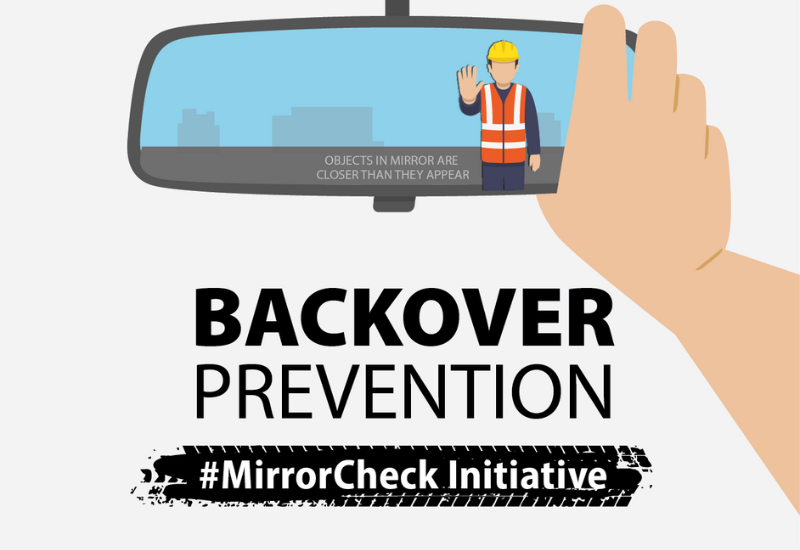In September 2022, a dump truck operator in Georgia arrived at a construction site to deliver fill soil. As he backed up to unload at the top of a slope, something went terribly wrong – the truck started rolling backward. Unable to stop it, the operator jumped out to avoid being hit. The truck overturned, pinning him underneath, and he was fatally injured. An Occupational Safety and Health Administration investigation later found that the truck’s braking system had failed, leading to the incident.
Every year, backover incidents like this lead to serious injuries and fatalities in construction zones and workplaces. These incidents often happen when drivers lose sight of people, objects, or vehicles behind them.
That’s why we launched the #MirrorCheck initiative to raise awareness about preventing backover incidents and fatalities in the construction industry. As part of this effort, we’re providing resources to help educate workers and employers adopt safety practices and reduce risks. By spreading awareness, we are not only highlighting the importance of backover safety but also to foster culture of safety across the industry.
The good news? Backover incidents are preventable. By taking a few key safety steps, employers can significantly reduce the risk:
- Adjust mirrors properly – Ensuring mirrors are correctly positioned gives operators better visibility and helps eliminate blind spots.
- Use spotters – A trained spotter can guide operators and alert them to obstacles while backing up.
- Install backup cameras and sensors – These technologies can detect people and objects behind the equipment.
- Perform daily pre-operation inspections – Inspect mirrors, brakes and warning systems before operating machinery.
Construction sites are often noisy, with loud machines that can drown out safety alarms. If alarms aren’t loud enough over the ambient noise of work activities, workers may miss important warnings. Additionally, many workers wear hearing protection to prevent noise-induced hearing loss, making it even harder to hear alarms.
Using sufficiently loud alarm signals is essential to ensure that even workers wearing hearing protection can hear critical warnings, so everyone stays safe.
A small action like checking mirrors before starting can mean the difference between a safe shift and a worker not returning home to their family at the end of the day.
OSHA encourages employers to make backover prevention a priority. Putting the American Worker First starts with awareness, preparation and commitment to protecting every person on the job.
Learn more about the hazards of backovers and solutions that can reduce the risk of these incidents.



